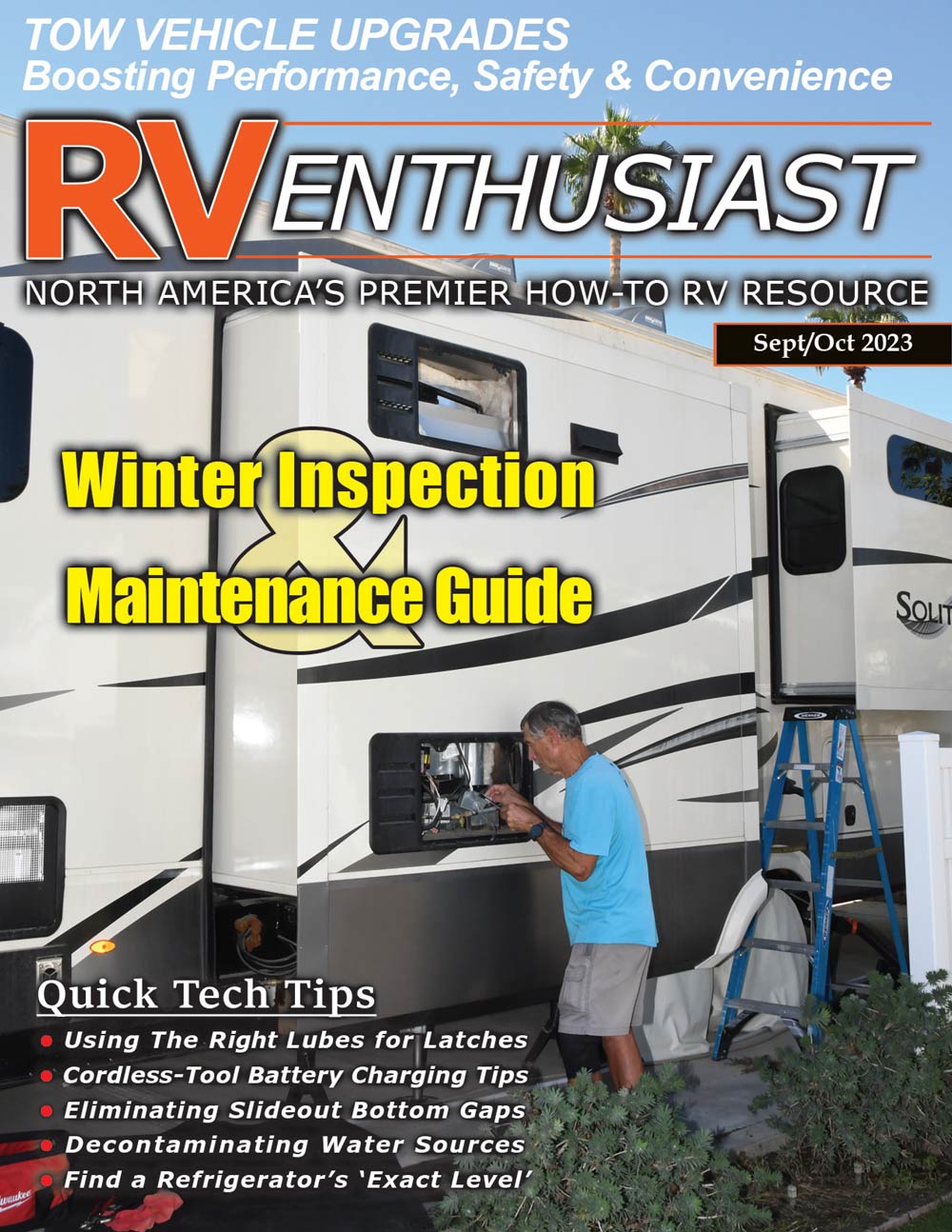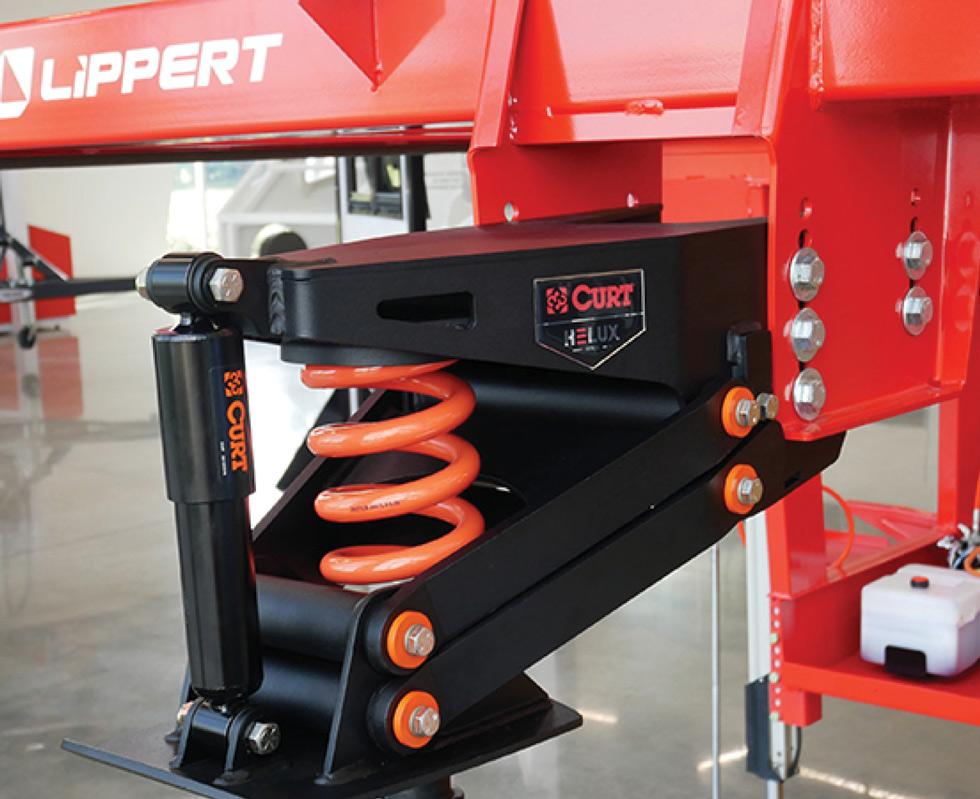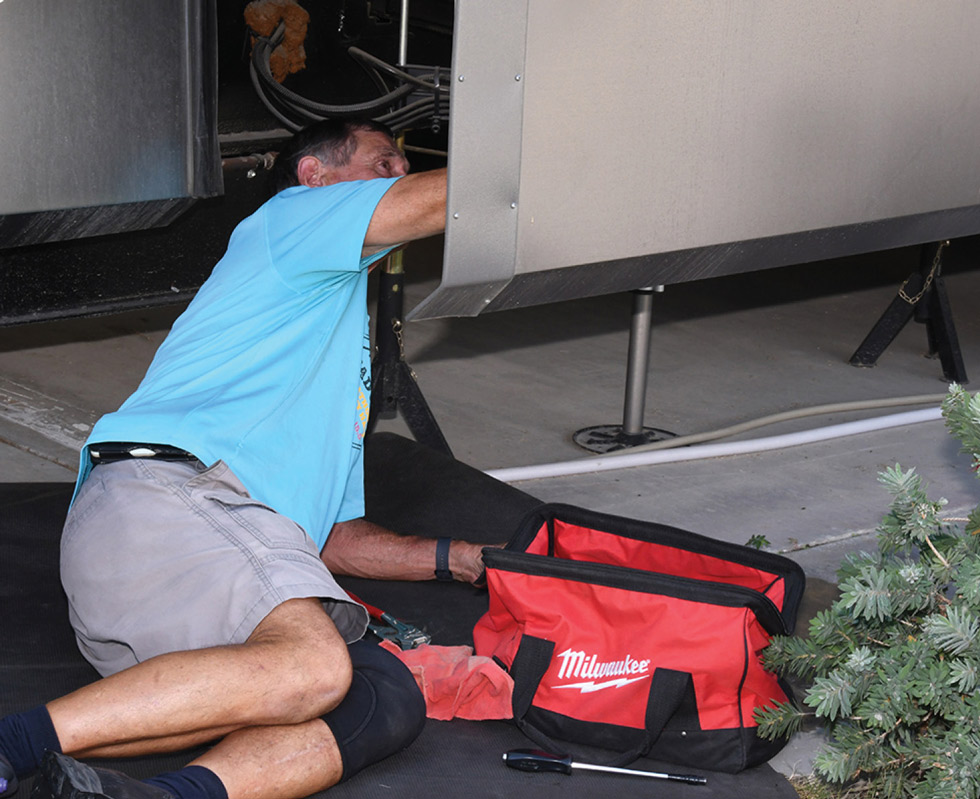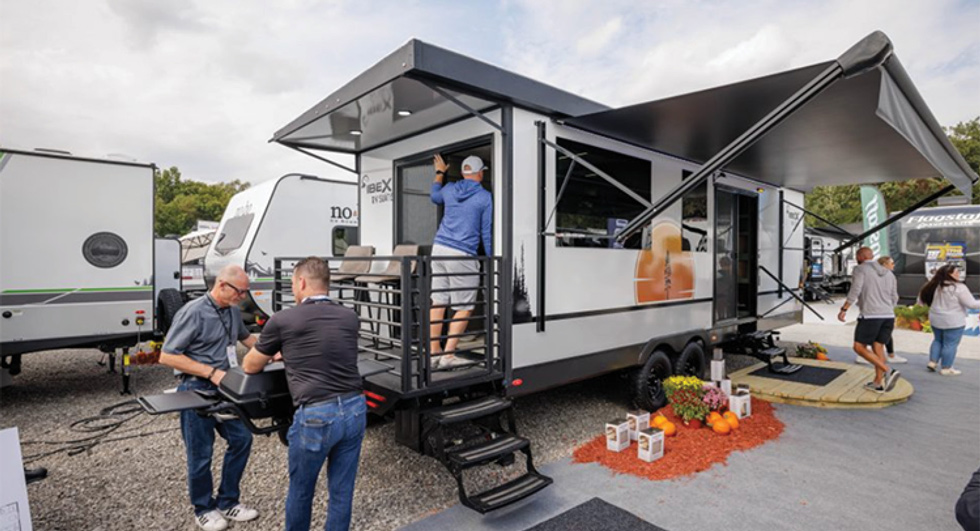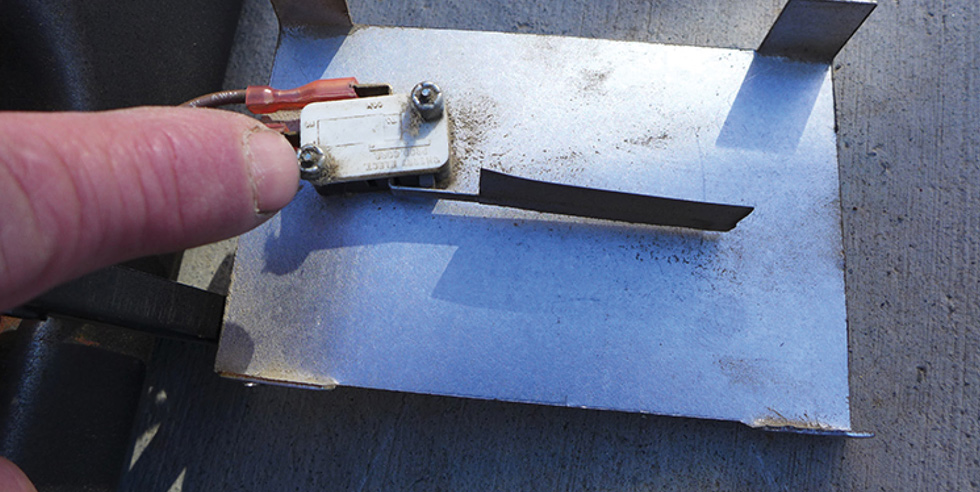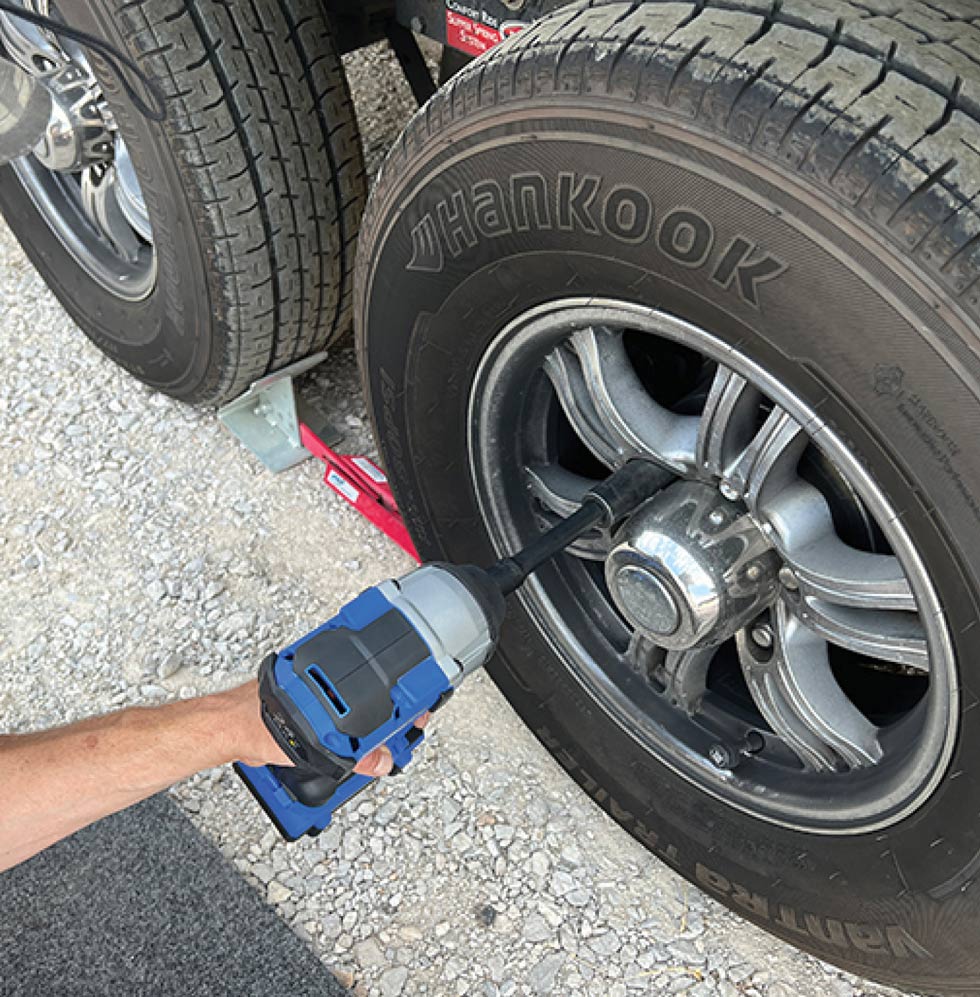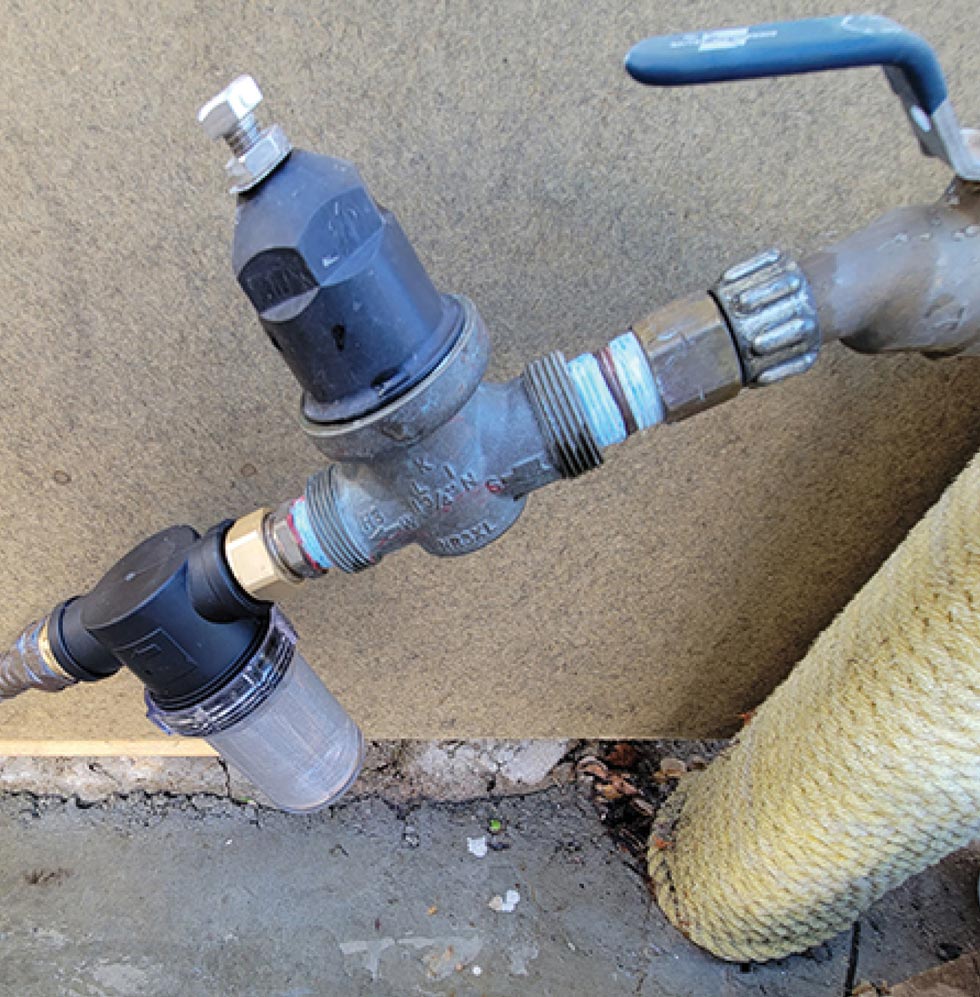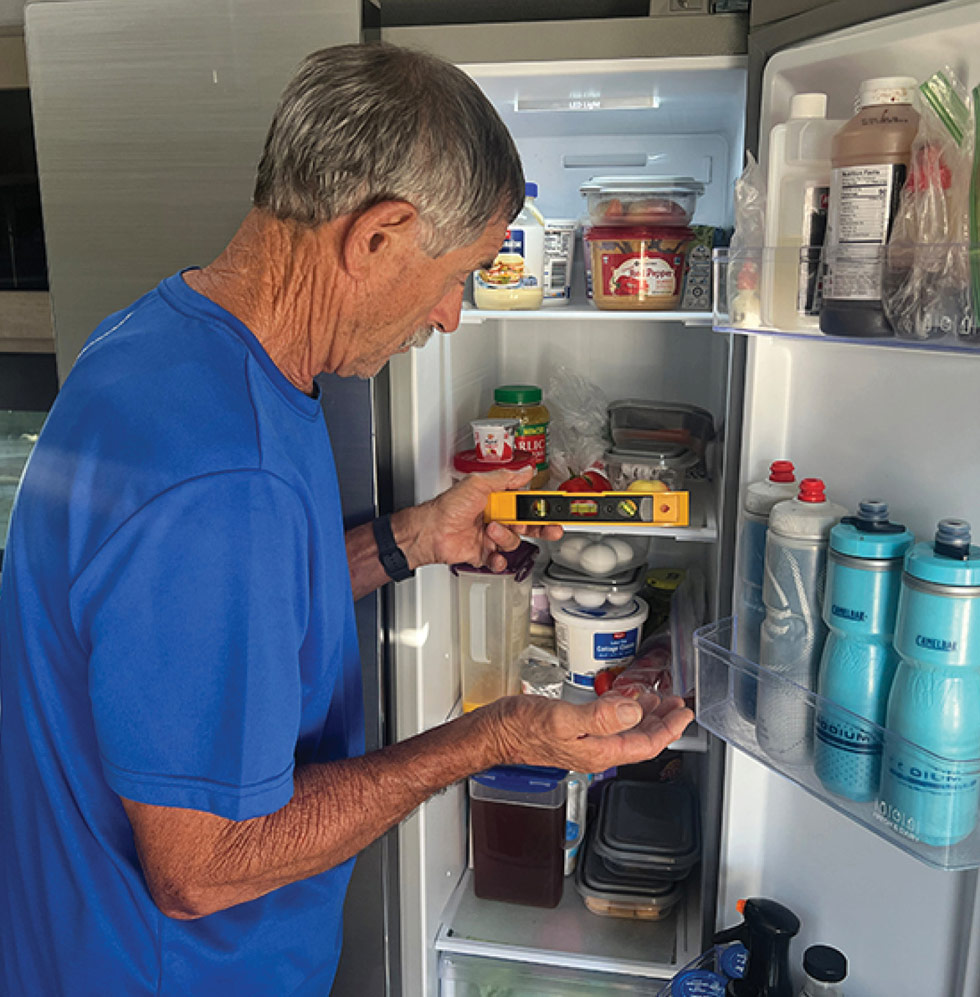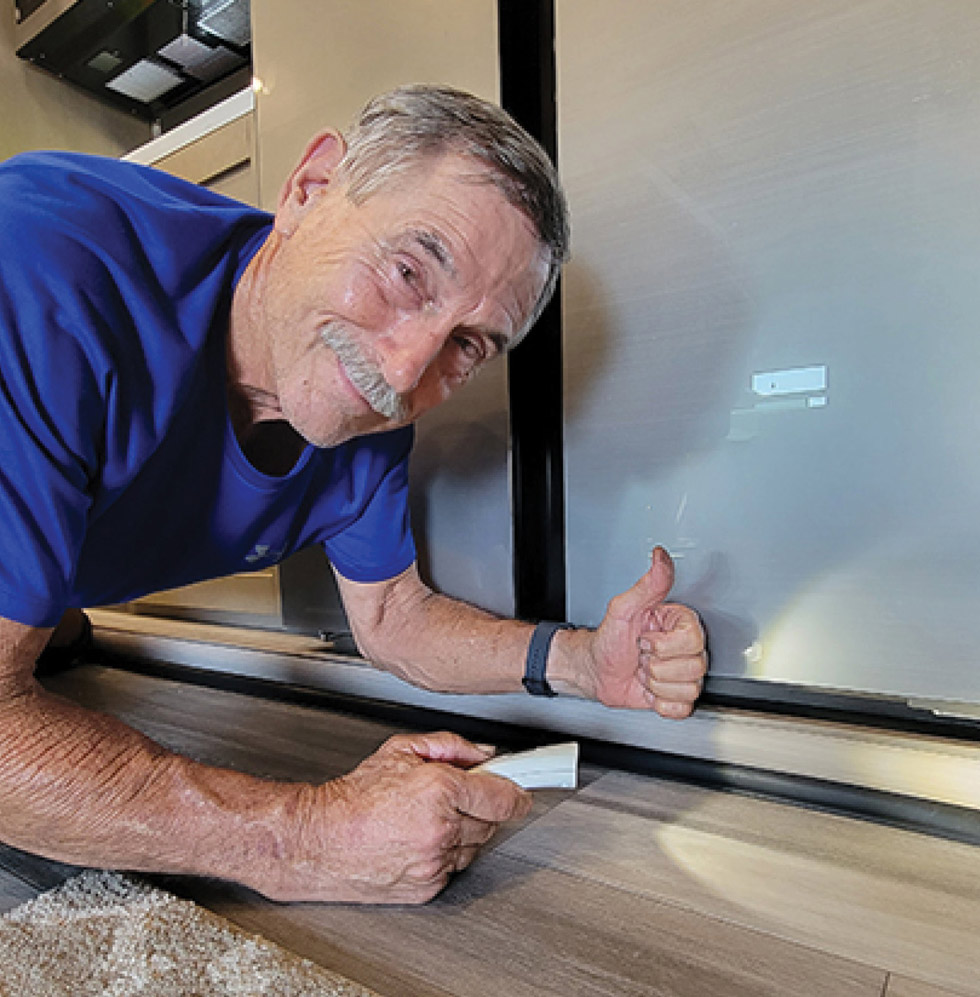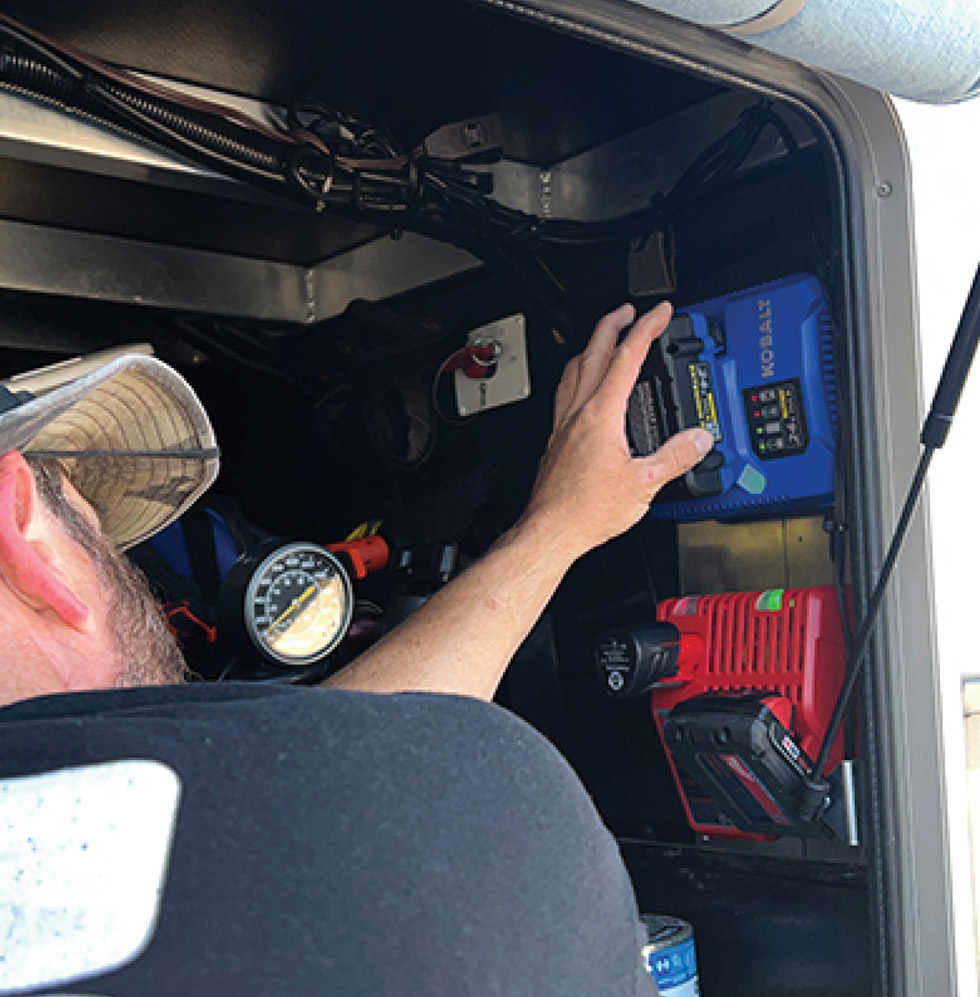Subscriber Access Only
Special Offer
Get 1 year of RV Enthusiast Magazine for just $9.99
Unlock My Offer No ThanksAlready a subscriber? Click here to access full issues.

The largest (by far) supplier to the RV industry, Lippert also is the industry leader when it comes to product development — but the new product debuts for 2024 are nothing short of inspiring. From its independent suspension systems and Helux pin box for fifth wheels to its trick Undermount RV Steps, Lippert pushed the engineering envelope for 2024.
Anyone’s who’s ever embarked on an extended trip knows full well that sometimes there’s just not enough space for all the things they want to take with them. With a little time and a Thule Evo roof rack, however, you can open up more of your tow vehicle’s carrying capacity. Just be sure to follow the instructions.
Owning a tow vehicle doesn’t have to be boring. Pickup truck and SUV owners are addicted to accessories and modifications that add personal touches to their ride, and as we demonstrate here, there’s no shortage of aftermarket products — from running boards to navigation systems and suspension upgrades — that can improve performance, convenience and safety.
Perhaps we should have said “self-insured” — because taking a proactive stance in avoiding common maladies is your hedge against trip interruption and costly repairs (if you can even get someone to fix the ailment without a weeks-long wait). Here’s as look at some problem areas — and what you can (and should) do to prevent bigger problems later.
(805) 320-6909
[email protected]
EDITOR – Bruce Hampson
(574) 584-4616
[email protected]
TECHNICAL DIRECTOR
BILL GEHR
(805) 340-5015
[email protected]
ART DIRECTOR – MIKE ACCUARDI
[email protected]
26362 Douglas ave., Elkhart, in 46514
 AFFILIATE NOTICE: RVE Media Group LLC provides links to vendors and products, such as an Amazon Associates account, for informational purposes, but that may provide a commission if you purchase from that link. We often label these links with language that provides transparency if the destination is an advertiser, affiliate, or partner. Products are often provided to RVE at little/no cost for editorial testing purposes by vendors/suppliers. Under no circumstances does this affect the results of the test or install as published in RV Enthusiast. Sponsored content is identified as such directly on the content.
AFFILIATE NOTICE: RVE Media Group LLC provides links to vendors and products, such as an Amazon Associates account, for informational purposes, but that may provide a commission if you purchase from that link. We often label these links with language that provides transparency if the destination is an advertiser, affiliate, or partner. Products are often provided to RVE at little/no cost for editorial testing purposes by vendors/suppliers. Under no circumstances does this affect the results of the test or install as published in RV Enthusiast. Sponsored content is identified as such directly on the content.
PRIVACY POLICY: Our complete privacy policy can be found at https://rventhusiast.com/privacy-policy/
Sponsored Content
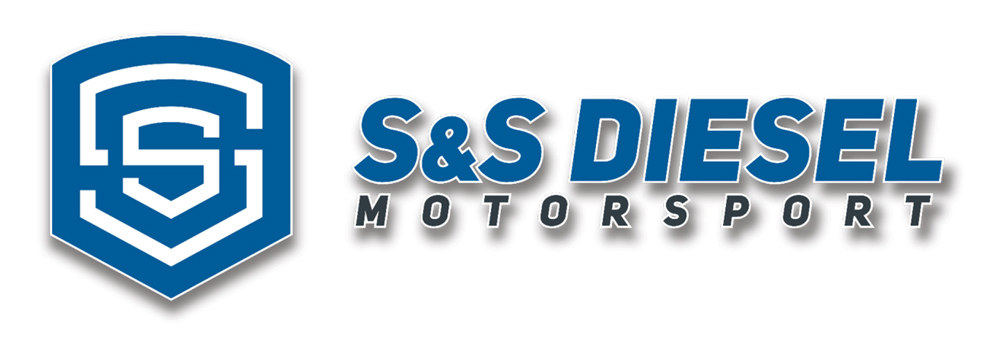
Fortunately, S&S Diesel Motorsport™, the common rail diesel injection experts, has teamed up with PurePower Technologies, Inc.®, the aftermarket division of longstanding fuel system manufacturer Stanadyne®, to do the impossible — collectively, they solved the widely-known CP4 high-pressure fuel pump problem plaguing these trucks.
The CP4 has a well-earned reputation for failing without warning — creating sudden power loss and taking out the expensive high-pressure fuel system in the process. Despite having to deal with being broken down on the side of the road, these truck owners will be facing fuel-system repairs that can easily exceed $10,000. The unreliable reputation is supported by recalls and lawsuits leveled at various auto manufacturers that use the CP4 in their production vehicles.
Why is that significant for RV Enthusiast readers? Having the industry in my backyard means that you tend to hear about things impacting the industry first.
I was reminded of the advantages that come with being “local” several times lately. The first came in early September, when I attended Lippert’s rollout of its latest 2024 products at the company’s expansive new headquarters located near the RV/MH Hall of Fame. There, Chief Marketing Officer Jarod Lippert walked me through an array of new components that really underscore the company’s commitment to innovation and pushing the design envelope. You can read about them elsewhere in this issue (see “Innovation Fuels Lippert Product Debuts” starting on page 15) so I won’t discuss them in depth here — but what Lippert and its subsidiary companies are accomplishing is nothing short of amazing. Just imagine how the new CURT Helux Coil Spring 5th Wheel Pin Box — equipped with a coil spring and shock absorber — will dampen the inevitable “chucking” associated with fifth-wheel towing…or the benefits of Lippert’s new faster-and-simpler Titan leveling system…or its new independent suspension systems for fifth wheels. Even something as seemingly mundane as RV windows become well worth talking about when they incorporate shades right into their assembly — and come in colors.
Sponsored Content

Unfortunately, with much of their focus on things like winterizing plumbing systems and “critter-proofing” their rigs, many owners overlook one critical component: the batteries.
Before the battery is put into storage, it should be inspected, cleaned, tested and charged. Always make sure to follow the battery manufacturer’s guidelines for proper maintenance and care and direct any questions to an appropriate battery professional. Here are a few basic steps anyone with a 12-volt battery system should be aware of and put into practice:
News & Notes
CAMP365 Debuts ‘T’ Model Bed Camper for EVs
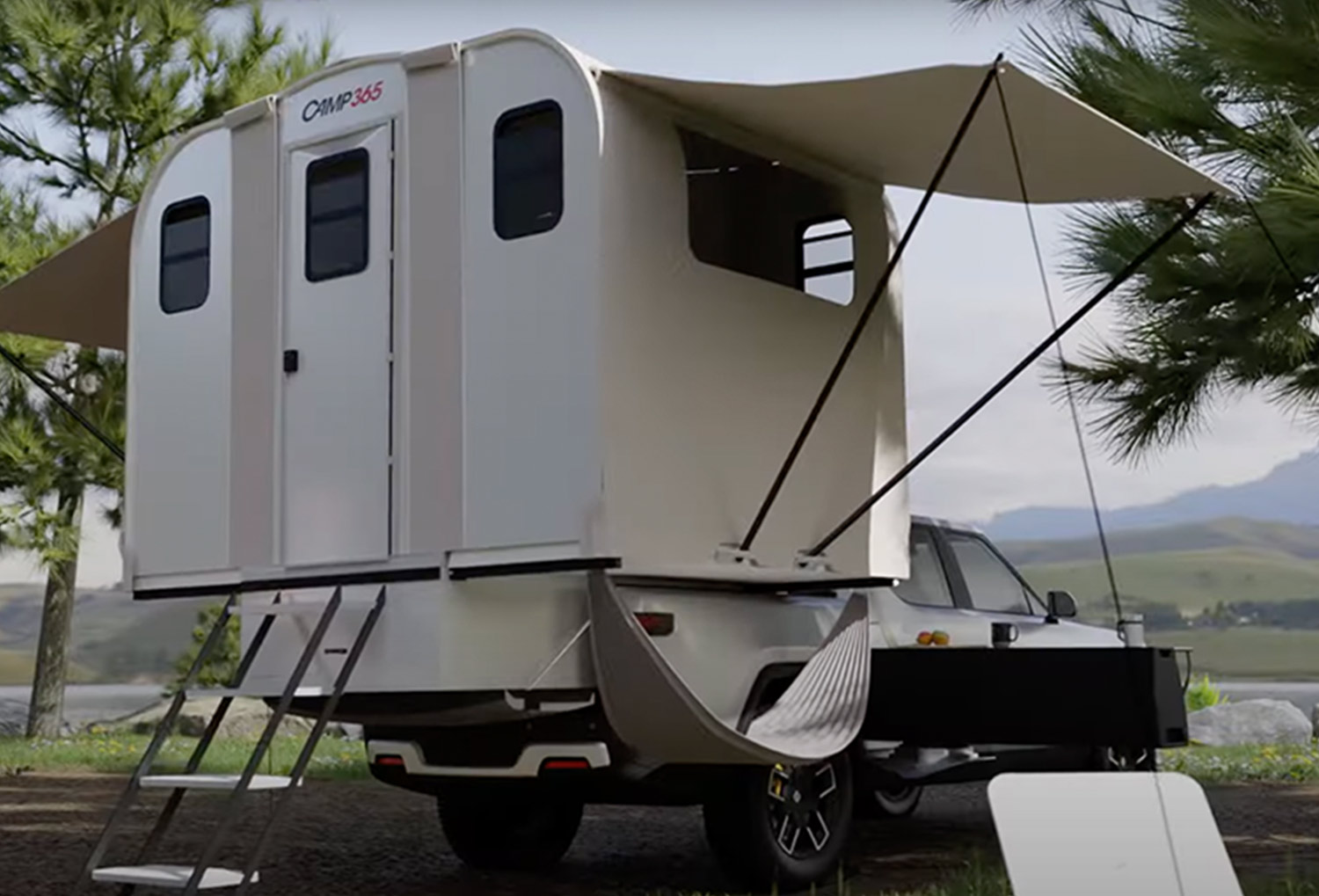
Lightweight and aerodynamic, the T Model weighs in at only 700-800 pounds (depending on options), but travels as a streamlined unit, drastically reducing wind resistance. The sleek design accounts for just an estimated 5-10% loss in range.
Measuring approximately 4 feet x 7 feet in a truck bed, the T Model unfolds in minutes to reveal a 9- x 7-foot, 63-square-foot interior that will comfortably sleep 4-5 people and afford 6 feet, 8 inches of headroom. Measuring only 4 feet wide, the T Model can easily be stored in residential garages and has patented technology to allow a single person to load or unload the camper in approximately 10 minutes.
Innovation Fuels Lippert Products Debuts
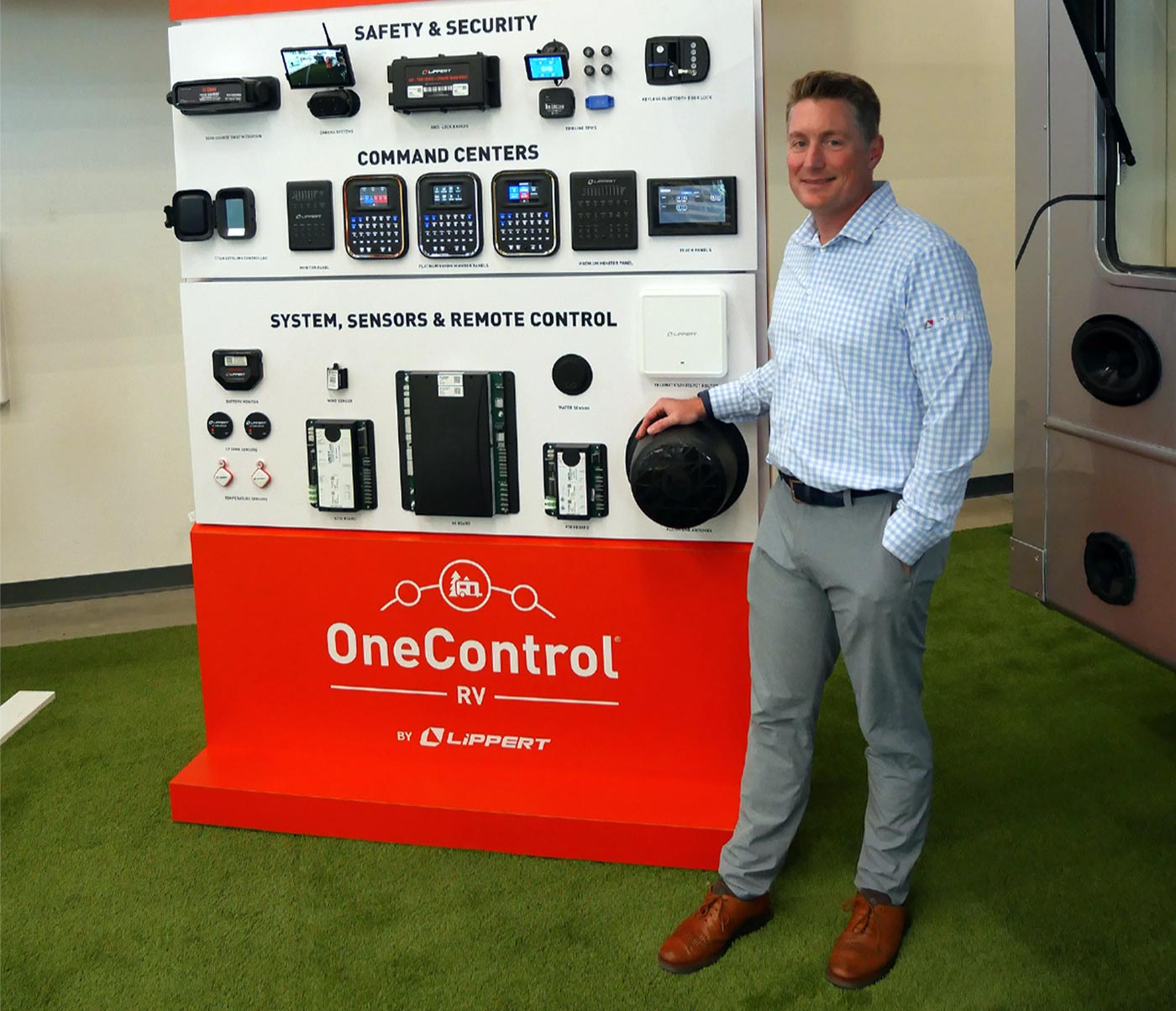
nyone who’s been involved in RVing for any length of time is familiar with the Lippert family of products. As the largest supplier to the RV industry, Lippert’s impact on the travel trailer and fifth wheel markets is measured in “average product content per unit” — and, for 2022, that number came in at an amazing $6,090. And that was in a year that tailed off sharply near year’s end as the industry began “right-siding” annual production after record COVID-fueled sales.
But that’s just on the manufacturer level. Not as well-known, perhaps, is the strength of Lippert in the aftermarket. While the Elkhart, Indiana-based company is involved in industries as diverse as building products, marine, commercial vehicles, automotive and even hospitality — Lippert is the leading manufacturer of premium mattresses — it’s extensive rollcall of RV brands includes CURT (hitches), Furrion (appliances), Duncan systems (windshields), Girard (awnings), HappiJac (bed-lifting mechanisms), Luverne (grille guards), Solera (fabric solutions), Thomas Payne (furniture) and a lot more.
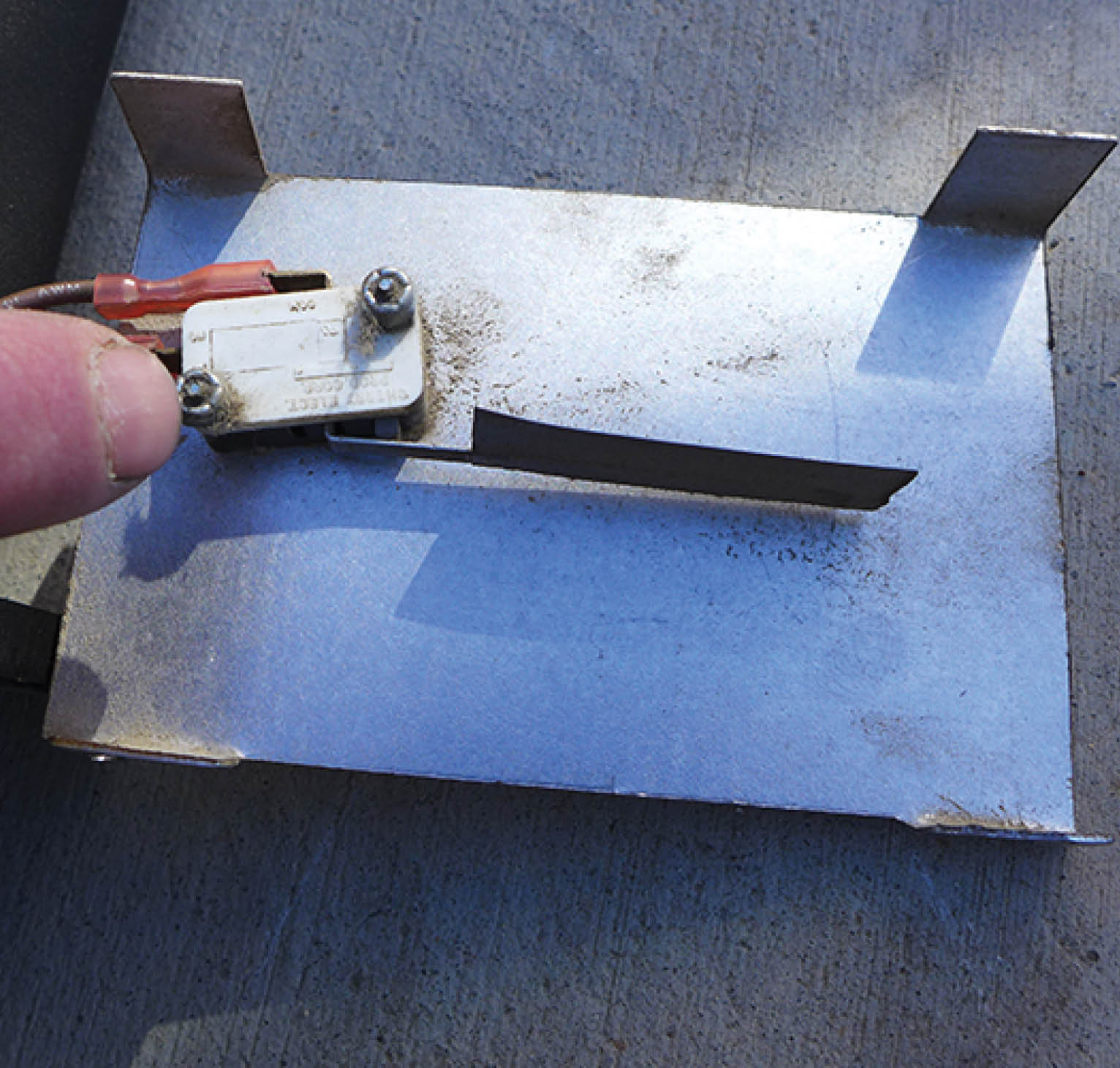
—Joe Stevenson
Joe, good thinking about the throwing parts at problems; there’s no reason to start hanging parts on it before you have a concrete diagnosis. There are only three places to look and test based on your description of the problem: the limit switch, sail switch and/or the circuit board. Typically, the circuit boards are durable, so my best guess is to focus on the sail switch. For some reason, the circuit boards fail more often on these furnaces. Also, the limit switches very rarely burn out — but they can.

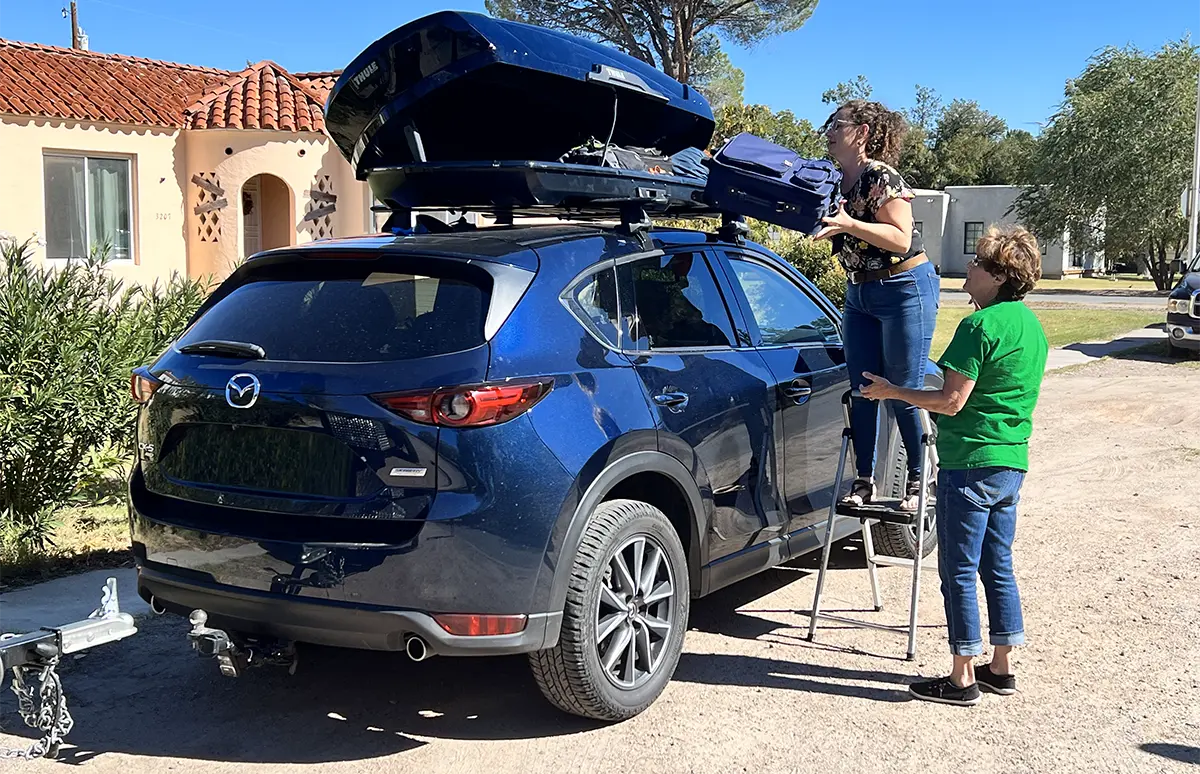
hen I bought my cross-over SUV back in 2018, I had no intentions of using it for anything more than a commuter vehicle and possibly as a dinghy towed behind a motorhome. So, I purchased it without the factory optional roof rack. Now, some five years later, my lifestyle has changed along with how I’ve started using my Mazda CX-5. The naked roof screamed for a roof rack to provide more room inside as I use it more and more for trips instead of just cruising around town.
Having worked with different pickup truck and RV suppliers while at various magazines, I knew Thule is highly respected for its cargo systems, so it was natural to use one of its products to put cargo rails and a box carrier on the roof. The system I picked is the aerodynamic WingBar Evo (MSRP: $509.90) which has two aluminum load bars supported by 4 feet that attach to the car via a clamp system specific to each vehicle. This rack system can support 220 pounds.


Vers have a love affair with their tow vehicles. I venture to suggest that many owners get so much satisfaction out of their pickup trucks that the trailer or fifth wheel is only “second string” in their minds. Maybe that’s an exaggeration, but there’s no question that owners pamper their tow vehicles. And adding goodies becomes part of the ownership ritual.
Fortunately, the aftermarket is chock full of accessories than can enhance the well-being of any tow vehicle — and, let’s face it, promote bragging rights. With camping season over for most of us, now is a good time to consider adding a few upgrades to enhance your truck whether you have anything hitched to it or not. Besides, Christmas is just around the corner – wouldn’t you rather have a solid tire pressure monitoring system instead of more golf shirts and socks?
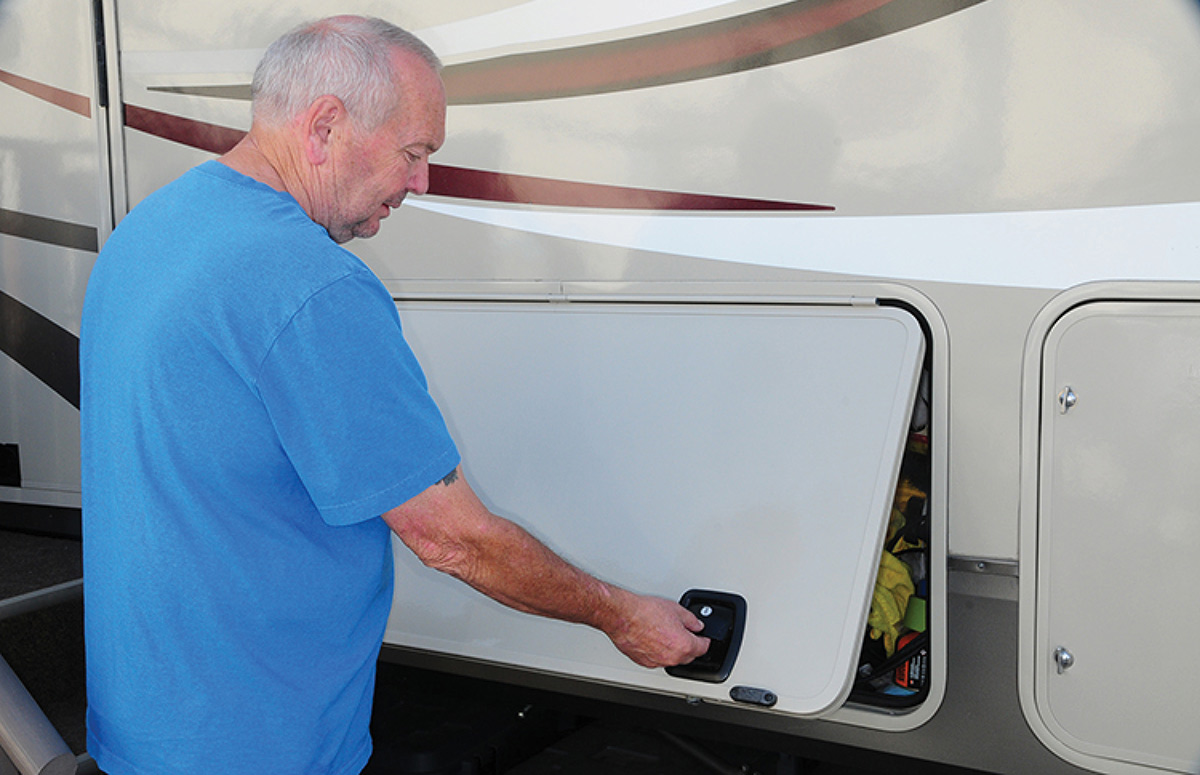
ust about everyone experiences issues with latches on their compartment and entry doors. Exposure to the outdoor elements — and, of course, repetitive use — can create “sticky” situations whereby the doors won’t close properly without a lot of prodding…and we all know that can lead to latch and door damage. Fortunately, the fix is about as simple as it gets — but it’s important to use the right lubricants.
Most people reach for WD-40 (or a similar product) for toning down squeaks and smoothing out friction between metal parts like a bolt and striker plate, but lubricants like this can attract dirt and dust and can be on the messy side. Fortunately, there are a number of products for this purpose, including a silicone-based liquid or gel or even a dry lube, which will restore function while resisting a build-up of crud. Sil-Glyde Multipurpose Lubricant ($17.97 at Amazon) is a gel that can be applied easily to the bolt and strike plate, which instantly restores smooth action. This lubricant “sticks” to the metal parts without running down the sides and creating a need to clean up the surrounding area, while providing necessary lubrication for a fairly long time (depending on the elements); we usually reapply on a monthly basis.
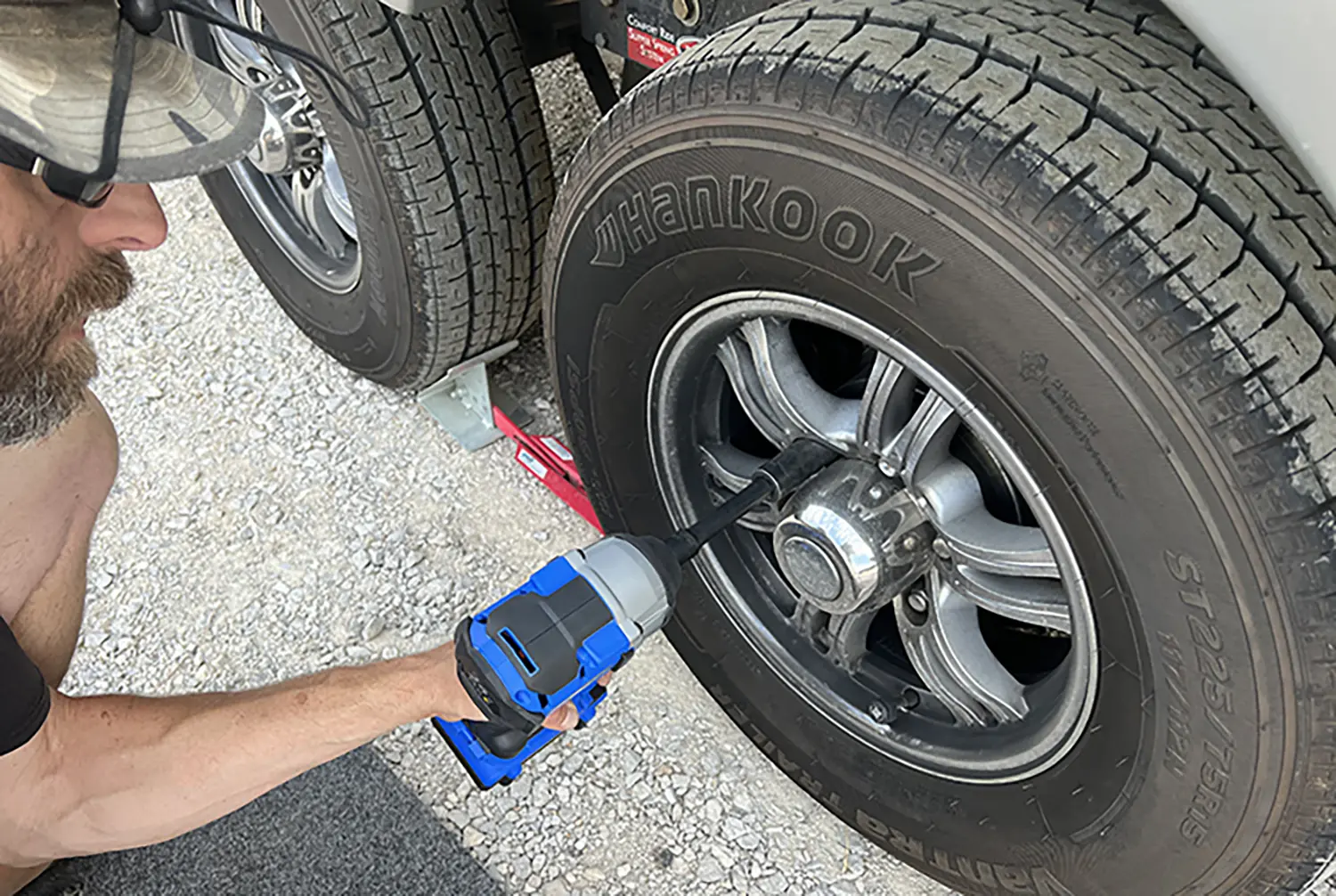
retty wheels add a lot of pizzaz to any travel trailer or fifth wheel, and chrome lug nuts add to the finished look. In many cases, the lug nuts are capped with a thin metal chrome-plated sheath to improve aesthetics — after all, no one wants to look at ugly studs protruding through standard lug nuts. In typical lets-save-some-money fashion, however, capped lug nuts are cheaper to manufacture and are provided with many of the trailer wheels rolling down the highway.
But trouble can be lurking — and not rear its ugly head until you have to change a wheel/tire on the road.
The problem? Over time, these capped lug nuts can build corrosion, swell, deform and crack, which makes them prone to failure — or, at least, create problems when they need to be removed or tightened. I make it a habit to torque lug nuts to specifications before and during all trips and, unfortunately, the tires on my fifth wheel have been replaced way too often (due to failures) so the lug nuts have been “harassed” more than normal.
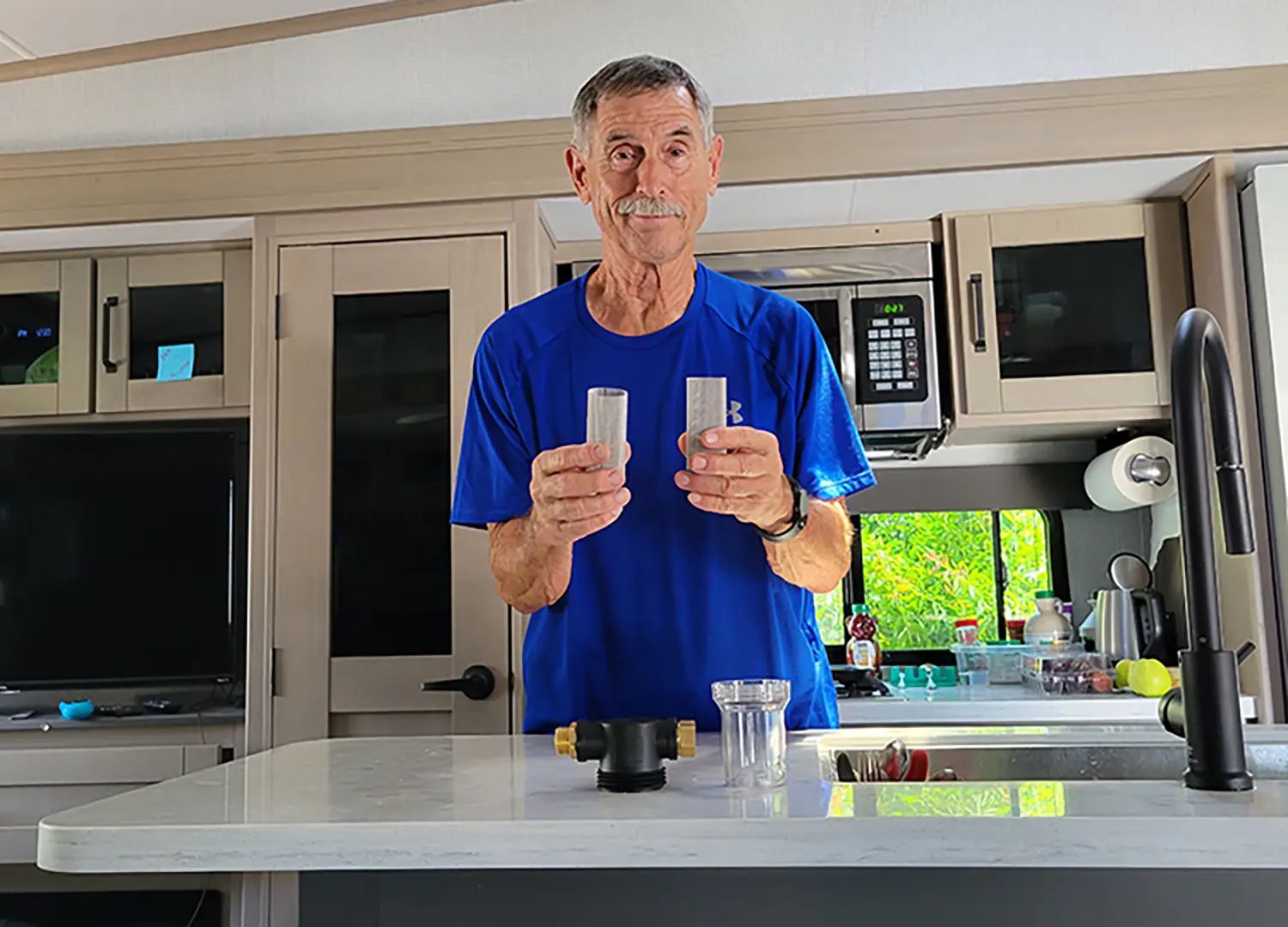
Vers who move from park to park know that water quality can be hit-or-miss in certain places. The water flowing out of the faucet can be full of anything from sand to dirty contaminants. There’s nothing worse than discovering — too late — that the water flow in the system has slowed down considerably or even become plugged with calcium or other materials coming from the campground hookup.
And we haven’t even mentioned the need to clean the aerator screens in the faucets on a frequent basis.
I use a solid carbon block filter between the faucet and the RV. This is effective for taste and odor, but it does nothing to help trap sediments, especially from well water that can be full of sand and other solids. A sediment filter used as part of a good multi-filter set-up, like the one from Clearsource (clearsourcerv.com), does a tremendous job of removing quite a bit of the bad stuff, but I found a garden-hose filter attachment that fits a standard garden hose or city-water hookup gives me another layer of protection by filtering out the bigger particles that have a tendency to prematurely plug the sediment filter used in the whole-house system.
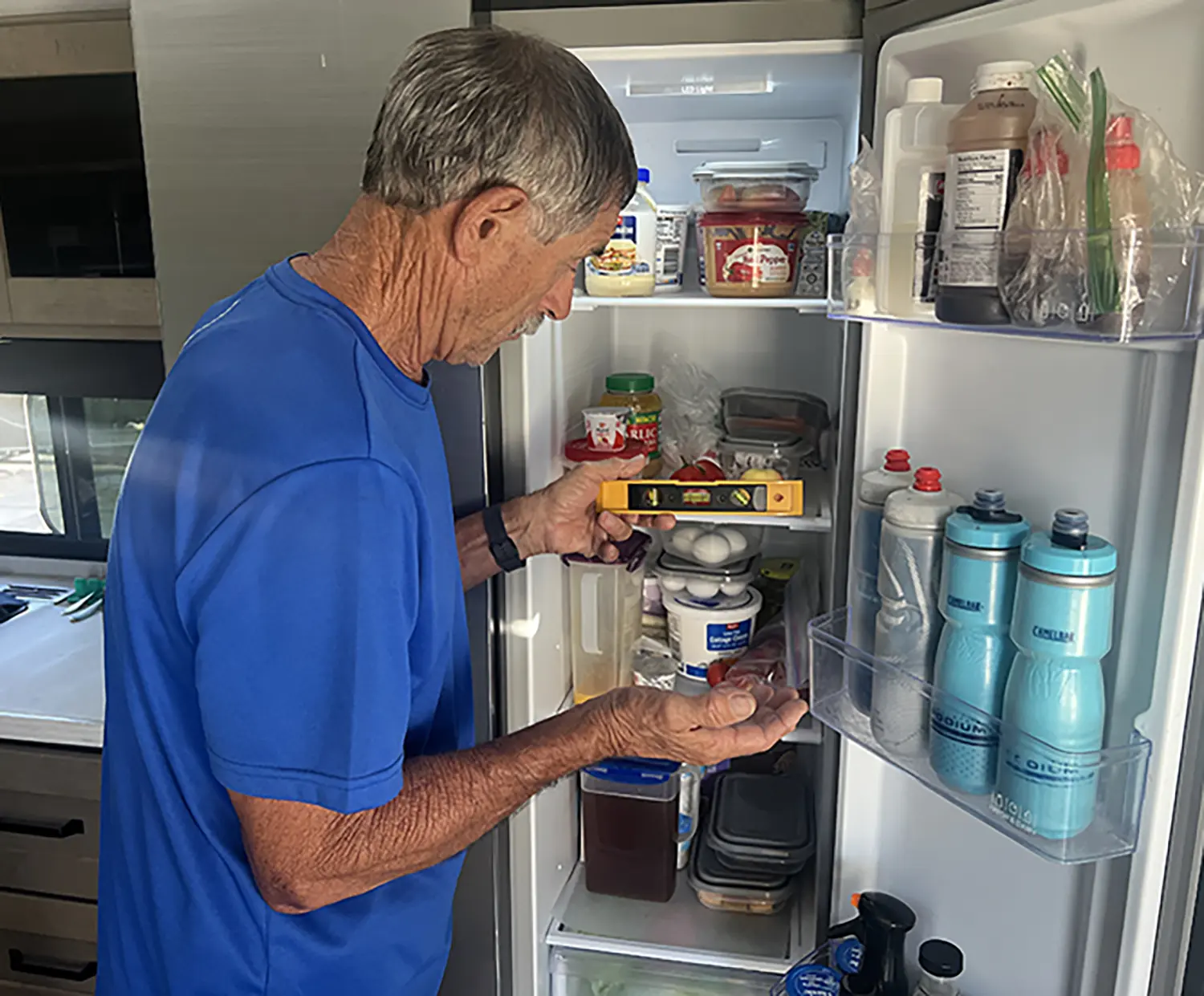
eveling an RV is more than just a process to make the inside habitable for human occupants. It’s necessary to keep the refrigerator operating properly — especially an absorption model that can fail when the cooling unit is operating out of the safe zone. So, what does that mean? In laymen’s terms, “level enough to be comfortable,” but that’s subjective. I’ve seen people live in RVs that defy logic. I guess some people are not affected by a lopsided house. Maybe they are okay with water in the shower puddling on the other side of the pan drain or when cabinet doors swing open wildly. How about sleeping?
Nevertheless, conventional wisdom suggests that it’s better to live in a level RV and not worry about damaging the cooling unit in an absorption refrigerator. That being the case, how do you know when the RV is really level?
Many owners use the quintessential “bullseye” level and try to keep the bubble half in the center ring. Unfortunately, doing so means you’ll quickly find out that countertops, the floor and refrigerator shelves are not typically on the same plane — and if the bubble is not smack in the middle of the center ring, it’s impossible to know if the positioning is within the mandated 3 degrees side-to-side variance and 6 degrees front to rear. I guess you can use a mechanical protractor, but that’s not convenient.
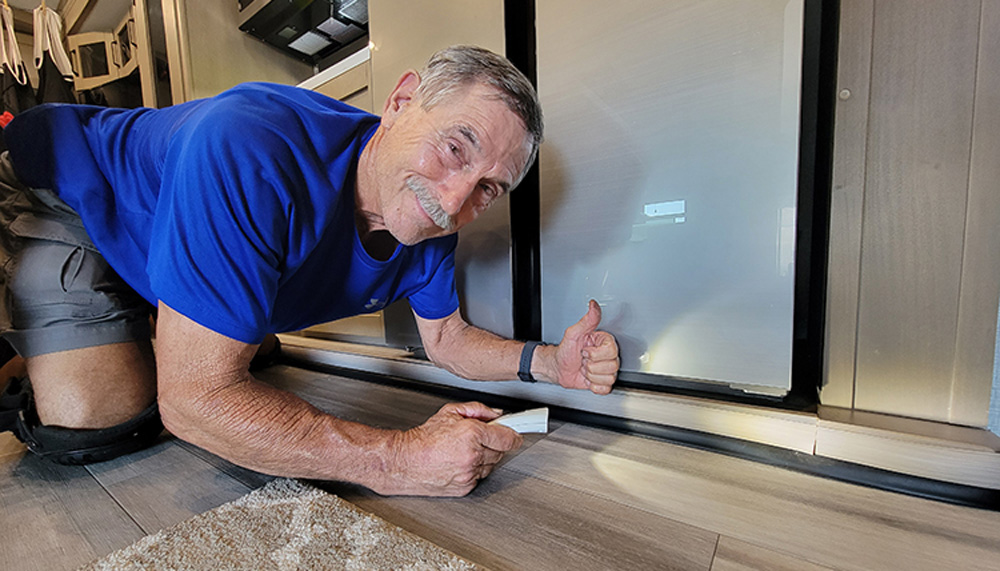
he floorplan in my new fifth wheel works well, but the gap between the floor and the kitchen/entertainment center slideout is wide. It didn’t take long for bunch of spilled M&Ms to disappear under the ledge and spread out under the slideout floor. Chasing the wayward candy revealed other items that left my clumsy hands and found sanctuary under the slide — not to mention the dust-bunnies that escaped the vacuum cleaner’s suction. RV Enthusiast Publisher Bob Livingston has the same gap under his fifth-wheel’s slideout and he’s still finding Cheerios that fell on the floor more than a year ago.
It’s just not a good scene, and likely attracts bugs and mice looking for some nutrition. I needed a solution.
Since the gap is more than an inch high, there’s plenty of space for just about anything that falls on the floor to take sanctuary. I turned to Amazon and while surfing different types of seals I ran across a garage-door seal that looked promising. What I was looking for needed to be long enough to attach to the front of the slideout lip and reach the floor — and not look like an afterthought. Fortunately, the “garage seal” I found — “Garage Door Top & Sides Seal 32.8 feet, Weatherproofing” (Amazon, $10.47 for a 32.8-foot roll) fits the bill.
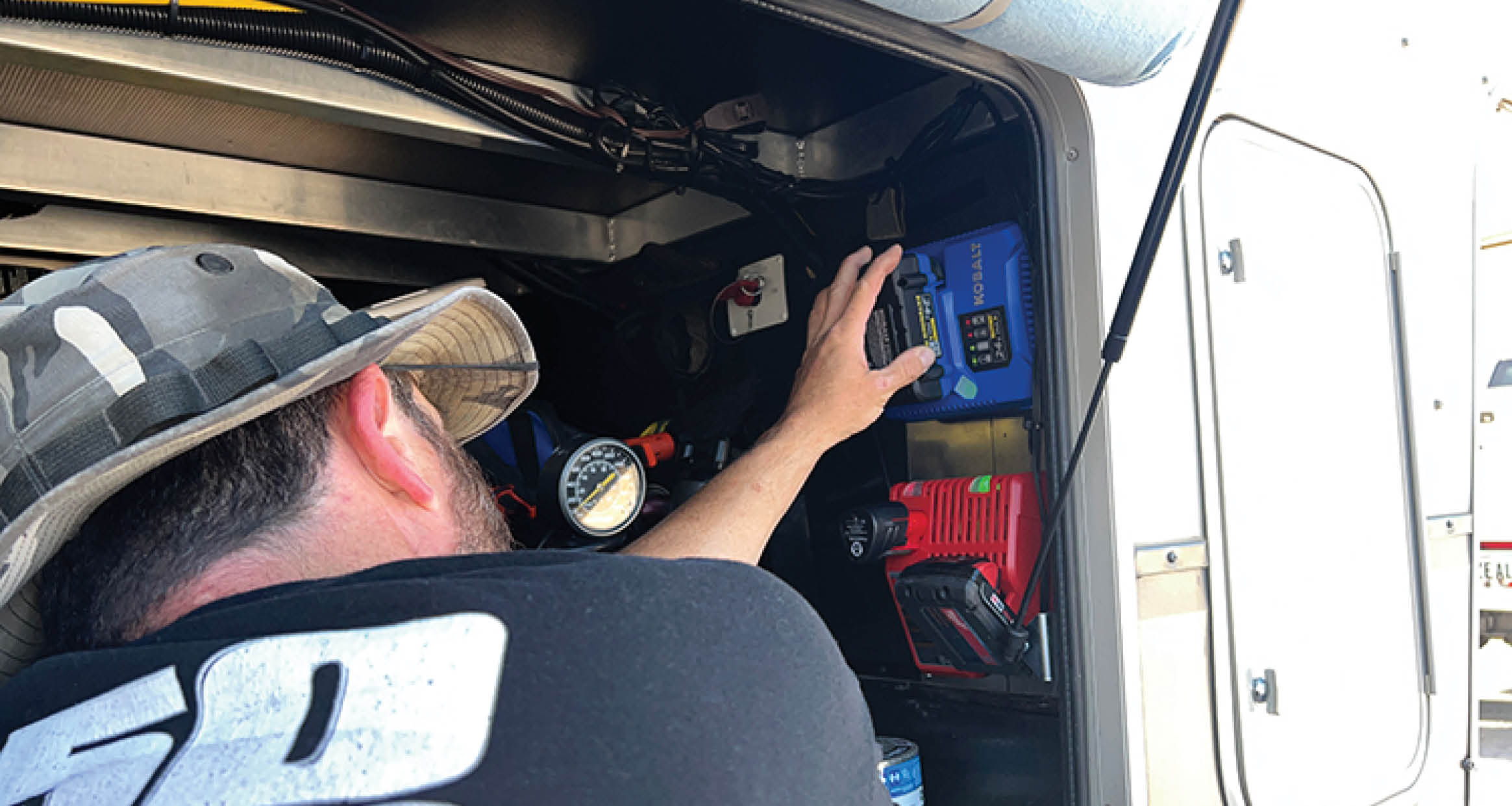
o RV tool kit can be complete without a few cordless power tools. I carry six of these tools, which means charging batteries is a frequent task. And since I have two brands of tools, Milwaukee and Kobalt, I have to likewise deal with two quick chargers — which always seem to be in the way. After much consternation about how to keep these battery chargers covert and still easily accessible (which may qualify as an oxymoron), I hung them on the carpet-covered, front wall divider in the storage compartment.
Naturally, that didn’t last long. The installation was less than stellar because these chargers have a couple of slots in the back for sliding onto screw heads that are in their respective mounting locations. Getting the right locations for the screws takes some measuring gymnastics — and getting a tight fit takes experimentation. At that, over time the screws loosened and the chargers wiggled, which made it difficult to release the batteries without using two hands — and that was awkward.

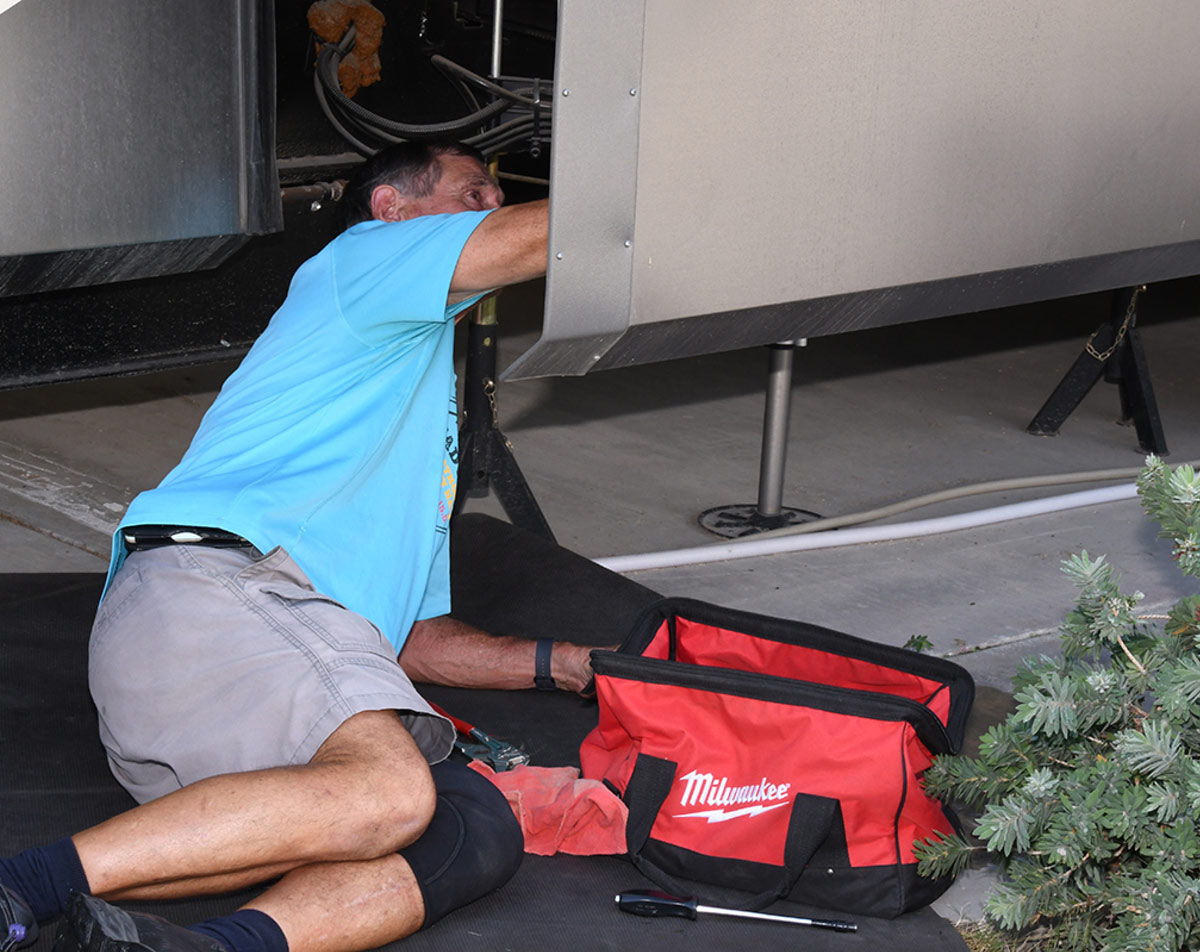
o one even likes to even think about breaking down on the road or in an RV park, but mechanical things will break or fail at some point — and if they are part of the complex network of materials, appliances and accessories that make up an RV, the consequences can be very stressful. Beyond the fact that you’ll have to either fix what breaks yourself or wait for an appointment at a repair shop, you also have to usually wave goodbye to money spent on sometimes pricey park reservations when trips are interrupted at the last minute.
Taking a proactive role is your best defense against problems that can sideline any RV excursion. Making repairs on the road is more difficult, but doable; it’s always best to prevent — or at least temper — the possibility that something will go wrong at the most inopportune time. Here are some common issues that, for the most part, can be nipped in the bud with a strong maintenance regiment.



